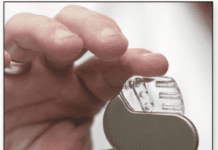Might Gluten in the Diet Make Some Dogs Act Strangely?
Dogs with fly-catching syndrome try to bite or jump into the air, seemingly to catch imaginary flies. It’s often believed to be some kind of obsessive compulsive behavior, although sometimes seizures are found to be the cause. Now a new case study reported in the Journal of the American Veterinary Medical Association suggests the behavior could in some cases be the result of gluten intolerance, the hallmark of celiac disease.
When It Comes to Canine Cancer Risk, Size Matters
For every four inches over average height, a person’s baseline risk for developing cancer rises by 10 percent, according to research conducted by Leonard Nunney, PhD, a professor in the Department of Evolution, Ecology, and Organismal Biology at the University of California, Riverside. There are a number of possible reasons, but much of the thinking behind the finding is that within any one species, the bigger you are, the more cells you have, and the more chance for them to mutate into cancerous forms when dividing and multiplying. Thus, if your baseline risk for cancer is 20 percent, for instance, it goes up 10 percent to a 22 percent risk if you’re 4 inches above average height.
There’s a Dog Who Needs Your Old Pacemaker
People who need an upgrade in their pacemaker have started donating their out-of-date but still perfectly usable models to veterinary school practices for use in dogs. That considerably lowers the price for a canine pet who needs a pacemaker because his heart’s electrical rhythm is off. He may be weak, prone to sudden collapses, and at risk for sudden death.
Pop Dog-Bathing Quiz
Baby shampoo or actual dog shampoo? Hot water, warm, or cool? What part of the body not to spray? And how often? Do you know the right answers to these questions about giving your dog a bath? Take this quiz to find out.
Ever Thought of Getting a Second Dog?
Most people prefer to have just one dog. Of the 65 million American households dogs live in, 87 percent of them live without other canines. And that’s absolutely fine. Those “singletons” generally have good lives, loved by their human family members and well taken care of. But if you’ve ever thought about getting a second dog for your pet, you may just want to take the leap—if you can afford it and have the energy to care for two canines.
Dispelling the Myth that Purebred Dogs Are More Disease-Prone
It’s true that certain medical conditions are more prevalent in particular dog breeds. Dachshunds are more likely to have problems with the discs in their spinal column than other dogs. A Yorkshire terrier is more likely to have a collapsing trachea, and a cavalier King Charles spaniel is more likely to develop a kind of heart disease called mitral valve disease. But a new study looking at more than 27,000 canines enrolled in the Dog Aging project—roughly half purebred pets and the other half mixed-breeds—found that the pedigreed pets were no more likely to have medical conditions in general over the course of their lives than the mutts.
How to Report Suspected Animal Abuse
Q: I have a neighbor who I have seen literally dragging his dog to the point that it whines as if in pain. I want to say something, but he does not seem like the kind of person you can talk reasonably with and I don’t want any trouble. What’s the best way to say something? I think what he is doing is animal abuse.
Garden Safety
Q: I do a lot of gardening, and my dog keeps me company in the backyard as I weed, mulch, water, and otherwise tend to the flower beds. But I worry because you always hear about different flowers and plants being toxic for dogs. Are there certain flowers I should absolutely be keeping her away from?
Download The Full June 2024 Issue PDF
- “Fat” and “Obese” are Not Four-Letter Words
- Short Takes
- Is All Your Dog’s Shedding the Sign of a Health Problem?
- Raw Meat for Dogs
- Helping Your Dog Get a Better Night’s Sleep
- Two Kinds of Drugs for Behavior Problems
- When Doggie Day Care and Dog Parks Are the Wrong Choices
- Dear Doctor
Fat” and “Obese” are Not Four-Letter Words
People tend to shut down when the veterinarian says their dog is fat or obese. They take it as an affront, often interpreting those words to mean they are being told they are irresponsible pet owners.
On Politics and Pet Care
This year in particular, it seems, emotions are running high about political events here in the U.S. as well as about conflicts in other regions of the globe. And sometimes those emotions spill over into discourse that might not be relevant or appropriate to a partic-
ular setting.
If You and Your Dog Are Traveling by Air
More than 2 million pets travel by air each year, according to the U.S. Department of Transportation. If your canine family member is going to be one of them, it’s good to get him acclimated ahead of time.















